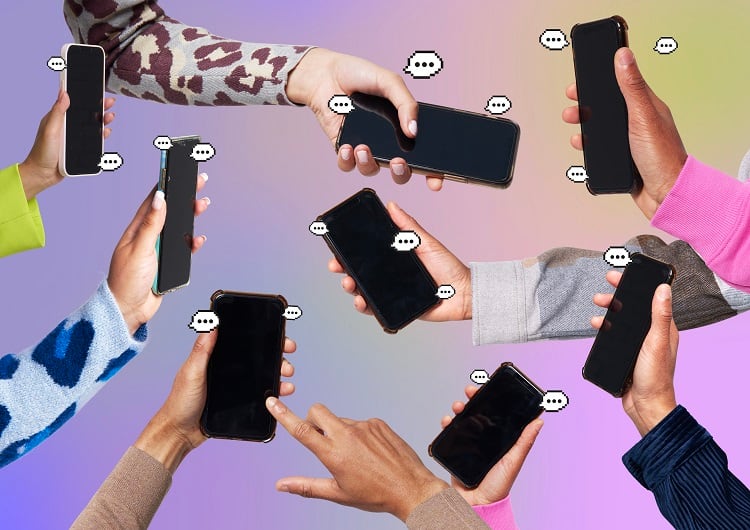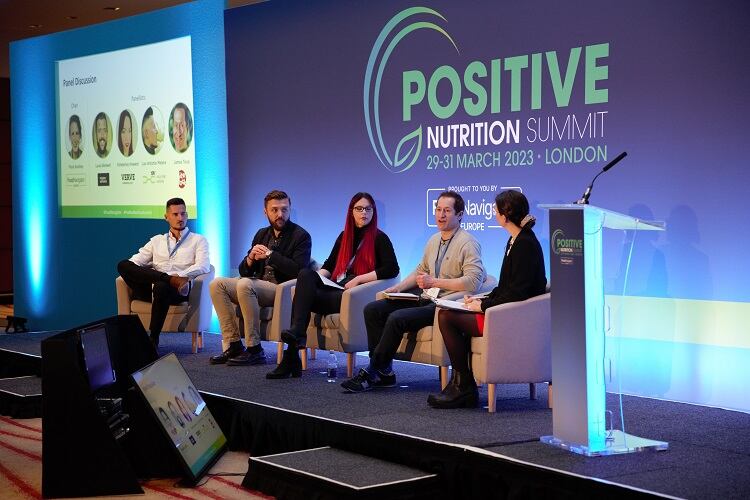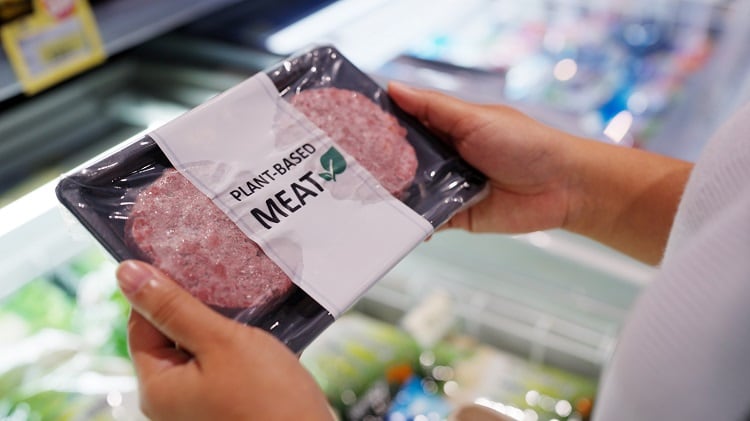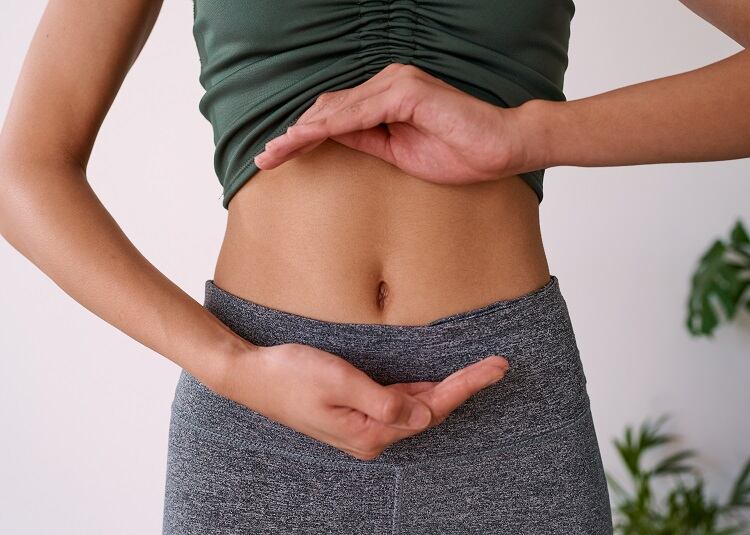Generation Z, or 'Gen Z', is roughly defined as people born between the years 1997 and 2012 – or, in other words, those aged between 11 and 25. While the age range goes from children right up to independent adults with jobs and perhaps even children of their own, one thing Gen Z have in common is the culture they’ve grown up in.
It is a culture dominated by influencers, social media, and digital marketing. However, it’s also one dominated by economic instability, from the 2008 financial crash to the current cost-of-living crisis.
At our Positive Nutrition Summit in central London last month, our Gen Z panel spoke about how to balance these concerns.
How to win friends and influence Gen Z
Gen Z, perhaps more than any other generation before them, are dominated by the digital economy. This means that online influencers, and digital marketing, are very impactful on them.
“About 90% of Gen Z are influenced by influencers on what they buy,” said Louis Bedwell, co-founder and managing director at challenger brand builder Mission Ventures. “And something like 60% of them believe that sharing is a form of activism...Social media plays a big role in how they think. And the brands that win are the ones that are authentic and offer them a sense of purpose.”
James Toop, Chief Executive of not-for-profit organisation Bite Back 2030 (a charity founded by chef Jamie Oliver), agreed, saying how easy it is to market to Gen Z when using influencers. “We did a social experiment where we launched a new chicken brand to show how easy it is to market to Gen Z, basically using Love Island people to promote on their social feeds . . . and sure enough, people bought our chicken brand when they went into the restaurant.”
Another marketing campaign that Toop mentions, by the cereal company Surreal, was sponsored by people with the same names as celebrities such as Serena Williams, admitting on their advertisements ‘we couldn’t afford the real Serena Williams.’
However, while influencers can be very, perhaps unsurprisingly, influential on Gen Z (would they be 'influencers' if they weren’t?), this isn’t always a good thing. Many in our panel believed that influencer-led marketing could negatively impact health.

“There are nutritionists, for example, who have a huge platform on TikTok,” said Kimberly Howard, Commercial Semiotician at VERVE, “and young people are following them, so are educated in that way. But then there's also pro-anorexia TikTok platforms where people are getting that feedback loop . . . the more they watch, the more that they're exposed to that problematic content. Ultimately, the mass of content out there, is very confusing to people.”
Lou Antonio Matera, founder and CEO of Youth Sports Nutrition, takes the argument further. “They're very easily sucked in by marketing for influencers, but in terms of actual relevance, or actual help, [influencer-led marketing] has very little value.
“It is more about the engagement side of things, getting [young people] involved, and trying to help them make better informed choices, which unfortunately, is difficult . . . they go to school [and are] marketed to, from all these companies, that HFSS side of things, which, guess what, taste really good. But in terms of nutritional value, there's very little there.”
Understanding the culture
Culture matters, whether you’re marketing to Gen Z or the Greatest Generation. Howard, a semiotician (someone who studies signs and symbols) stresses how important it is to understand the signs and symbols that appeal to young people.
She identified ‘a territory of playful indulgence’ in packaging that appeals to Gen Z. Giving an example, she spoke about the water brand Liquid Death, which uses cans with the imagery of heavy metal music. “We met the innovator of this product. There was an insight that teenagers were walking around with cans of Monster, but with water in them, because it looked cool, and just as simple as that.
“And we all know brands like Monster, they have kind of affinities with subcultures. So you know in the rock space Monster is big. [Liquid Death] is very playful, it has turned something that is quite conservative like water into something that is rebellious - kind of flipping it on its head.”
“I think somebody said to me the other day, ‘the definition of a citizen is to belong, the definition of a consumer is to take away,’” added Bedwell. “And I think it turns out, they all want to belong to something . . . it's about having playful, clear, labelling, a strong purpose, but actually, that translates into value. And I think value isn't just about taste, brand, price, but also the right product in the right place.”
For Matera, appealing to young people “needs to be something that covers that full spectrum, which is difficult as you can sort of categorise different products for different age groups, which again, is very difficult to do.
“So getting someone to get an ambassador, get a Marcus Rushford, for example, they will look up to, admire, someone someone from a very similar background . . . and follow that because it resonates.”

Understanding the culture is also important to avoid leading members of Gen Z into unhealthy lifestyle choices. “Seven in 10 young people have a food app,” said Bite Back's Toop. “They've got them downloaded on their phones. So what then you get is a lot of direct marketing.
“Some of our young people will say that at 4pm on a Friday, you'll get your text from [a fast food chain] with a 50% discount on a pizza, perfectly timed as you're leaving school if you're hungry on Friday.
“If you ask them, they'll say well, look, we're not influenced by advertising and marketing. But it's just so normalised now that they don't even notice it. It's just part of their lives.” That integration with the digital world can make it easy to influence young people into making unhealthy choices.
Affordability
However, one of the primary things that defines Gen Z as a market, especially within the last year, is affordability. The cost-of-living crisis has made affordability more important, and Gen Z want to be able to afford things.
Young people, says VERVE's Howard, are spending a lot more time in their homes than previous generations, rather than going out.
This can even act as an impediment to making healthy choices. “They're very price sensitive,” said Bite Back's Toop about Gen Z, “and the healthier things are typically more expensive, you know, with some of our young people talk about living just across the other side of the river . . . when you move down your high street you got convenience stores, checking shops, fast food outlets.
“And then you come to the other side of the river, like less than a mile away. And it's Prets, Leons, healthy places. But though the price differential between those two just makes it inaccessible. So young people are kind of moving past those places, because they can't afford to go in, even if they would like to because they're healthier.”
Good quality brands, added Youth Sport Nutrition's Matera, are not easy to make cheaply. “Generally because they are making quality options are also a lot more expensive to produce. And I think that's a big factor. Again, not an easy fix.”
“The answers are just switching from the less healthy options to healthier versions,” said Mission Ventures' Bedwell. “People are buying Maryland cookies, or they're buying grab bags in coffee rooms, or Cadbury’s chocolate fingers . . . let's just put the product in the same place in the same way, get those nuances around that. But . . . what we're not saying is we need to create a new category of products marketed to consumers that have never existed before.”
Howard stresses how important making food affordable is, especially for younger members of Gen Z who are still reliant on their parents. “It's very clear that parents want to feed their kids healthy food, but it's the systems that we have in place that is not enabling them to do that.
"We've discussed so many initiatives this morning. But I think, obviously making [healthy food] much more affordable is a huge thing."





